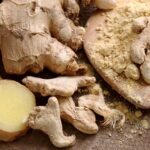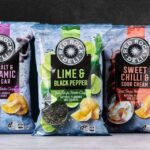Health conscious consumers are now willing to try low sugar or sugar free products. Maltitol is a bulk sweetener used in production of low sugar foods or sugar free foods, including Low Sugar Chocolates, explains Renu Sanghvi
Consumers prefer health foods, which should also be tasty. Gourmet pleasure is therefore a challenge for food producers. Health conscious consumers are now willing to try low sugar or sugar free products. However acceptability of any sugar free product depends on its taste and mouth-feel.
Maltitol is a sugar substitute that can provide sweetening power of sugar, with around half the calories.
In fact, Maltitol is a bulk sweetener used in production of low sugar or sugar free food. It is derived from maltose – a sugar obtained from cereals. It is available in an anhydrous crystalline form. Manufacturers produce Maltitol under their own brands. It is a white powder and the process is patented.
Sweet – without sugar (sugar substitute)
The natural sweet taste of Maltitol combined with physico-chemical characteristics is similar to those of sugar substitute used in many applications – especially in chocolate processing.
Normally traditional chocolates contain approximate 30% to 50% sugar, most of which is sucrose. Sucrose gives the chocolate a sweet taste, while allowing the aromatic notes of the cocoa beans. Not only this, it also provides the volume essential for making quality chocolates.
Maltitol can perform the same functions without the need to add intense sweetener.
A recent study comparing various sugar substitutes in terms of numerous sensory criteria showed that chocolate made with Maltitol is the closest to that made with sucrose.
The solubility of Maltitol, being similar to that of sucrose, allows chocolates to melt in the mouth. The smoothness of chocolate also depends on the final particle size obtained by the refining process. Low sugar chocolates made with Maltitol does not interfere with this process and final particle size can be reduced below the threshold perceptible by the tongue without any problem.
Because it is metabolized differently from other sugars, the amount of calories in Maltitol is almost half that of sugar.
Depending on the amount of cocoa butter used, Maltitol can reduce the calorie count in chocolate from 10% to 25%.
A study shows that Maltitol induces a very low glycaemic response that is less than that of chocolate made with sucrose. The low sugar chocolates made from Maltitol can be eaten as part of a diabetic diet (under medical supervision).
Maltitol is widely authorized throughout the world in European union, the directive pertaining to the use of sweeteners allows polyols- including Maltitol to be used in products with cocoa base identified as energy reduced or having no added sugar.
The Technical bit
Maltitol avoids water release during the conching processes. It has a low hygroscopicity. The risks of chocolate gaining water, during the manufacturing process and storage are just insignificant.
The viscosity and shelf life of low sugar chocolates – made with Maltitol – are the same as those of traditional chocolate.
















